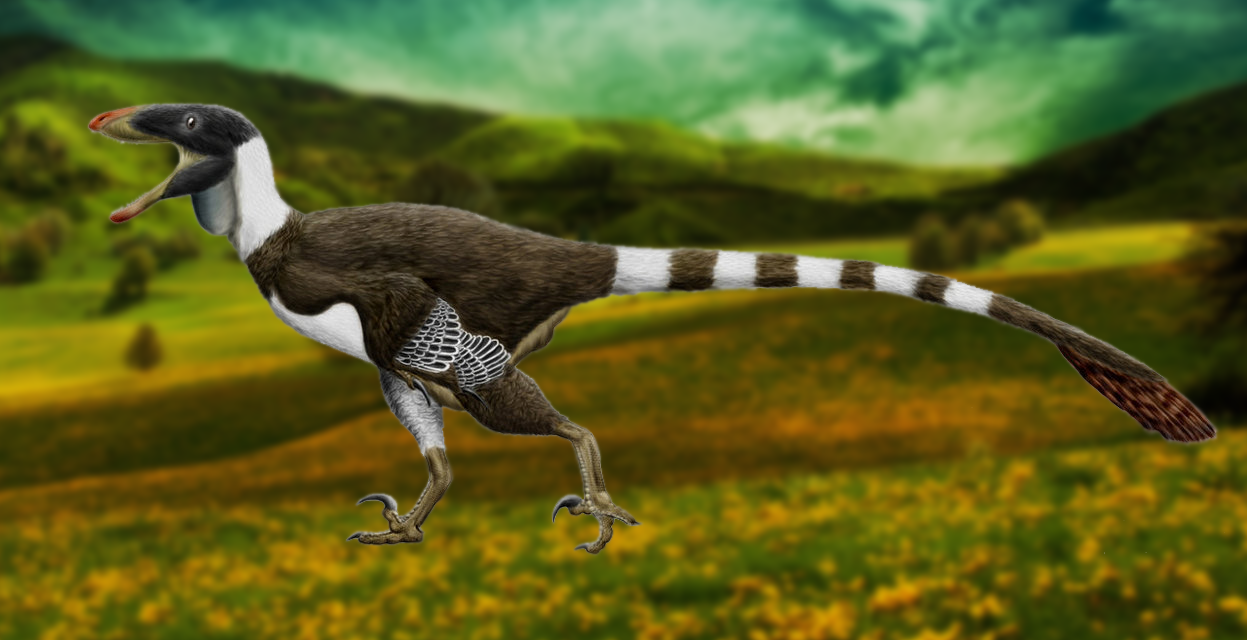Another dinosaur whose history is not well known to the world , the under lying reason being due to lack of factual evidence one cannot figure out that was the fossil of one dinosaur or it belonged to two dinosaur of different species

Achillobator belonged to the genus of dromaeosauridtheropod dinosaur and it lived in the late cretaceous period of Mongolia. This dates back approximately about 90 million years ago. It was known to be an intensely active bipedal predator ( a dinosaur walking on two limbs) and it used a sickled shaped clw to hunt down its prey. This claw like feature was spotted on the second toe of each hind foot of the dinosaur. Known as a large dromaeosaurid was one of its kind and an average achillobator grew upto 20 feet tall that is 6 meters long. This dinosaur grew as big as the Utahraptor which was also considered to be a relative close species of the same.
The name of this dinosaur Achillobator holds a story behind it, the generic names is inspired from the infamous ancient Greek warrior of the Trojan war also holding resemblance to the Mongolian word bator which translates to warrior or hero in English. It is also because of claw or the defence weapon the sickle shaped claw that makes it a very aggressive and vengeful predator. One of the species of this dinosaur is also named as giganticus owing to its size as it is much larger than most other dromaeosaurids. Thus that's how the name of Achillobator holds a lot of significance to Greek mythology.
The first place where the fossil remains of the achillobator were first spotted were during a field expedition in Mongolia and Russia in the year 1989. Even after it was discovered in the year 1989 it wasn't named or described for a period of ten long years. In the year 1999 a Mongolian palaeontologist named AltangerelPerle and Americans Mark Norell and Jim Clark came out to describe what the fossil looked like. Having said that enough description wasn't given about the same and the information got published without the knowledge of Americans Mark Norell and Jim Clark who were working on hands with AltangerelPerle for the same. The reason behind the delay in research and announcement of this discovery is left unkown but science had to pay a price of their indecisive nature and unclear thoughts.
When a fossil is found it is in most cases found very disarticulated, similar is the case of the achillobator's fossil. Its parts were a puzzle and were attached to only one clue that being a fragment of the upper jaw with the teeth that signified the mouth of the achillobator. Apart from that they also found fossils of its vertebrae from all sections of the spinal column, ribs, and bones from the shoulder, pelvis, forelimbs and hindlimb. . These remains were found in the Bayan Shireh Formation of Dornogovi Province, Mongolia, which dates to the Late Cretaceous period as discussed above. It is difficult to ascertain the exact age of the fossil but a hypothesis based on comparing the other fossils it was found out that that this fossil belonged to the late Cretaceous period, that dates back to about 93 to 80 million years ago. Other dinosaurs found in the Bayan Shireh include Alectrosaurus, Segnosaurus, Talarurus, and Bactrosaurus
Interesting facts about AchillobatorAs already mentioned in the history of achillobator about its Greek mythology significance one needs know that the name is actually a combination of two words Achilles and Bator. Achillies was a famous warrior / hero in the Greek mythology where as a Bator is a Mongolian word that means hero. This word is actually pronounced as ah-KILL-oh-bate-ore.
Owing to its sickle shaped claw one cannot mistake it to be a calm herbivorous creature. Achillobator is a hardcore carnivorous predator that is always on a hunt to find its prey.
Achillobator is a gigantic dinosaur as it weighs 500 to 1000 pounds and this ferocious carnivore could grow up to 20 feet tall.
The presence of achillobator could be felt in the Central Asian plains (which is currently called Mongolia) during the Late Cretaceous period, which was around 98 to 83 million years ago.
This dinosaur belonged to the raptor family and was known to be one of the ground dwelling predator who actively ran and walked on its two feet.
One of the most life threatening and deadly weapon is the claw that is shaped like a sickle to hack its prey. This claw is found on the second toe of its limb.
As already mentioned achillobator is a raptor but unlike other raptors like Velociraptor and Deinonychus. Achillobator has a distinguished feature that makes it stand apart. The unique hip alignment of the achillobator has led many scientists to believe that it was a completely new form of dinosaur.
Achillobator is considered to be one of the forefathers of the modern birds, this is because like many raptors from the creataceous period, the achillobator is also often demonstrated with a feather coat. Having said that the fossils don't really specify the presence of feathers, this interpretation is purely out of assumption.
Fans of Jurassic park claim that Velociraptors in Jurassic Park are not misclassified as Deinonychus or Utahraptor. Instead, they are most likely misclassified Achillobator, a much larger dromaeosaurid from Mongolia. Thus Achillobator has found its way to the Jurrasicpark at least, but in disguise of a Velociraptors. This could be backed by a claim made in the book that mentions Dr. Henry Wu mentions that the amber which the raptors were cloned from came from Mongolia. Therefore, they could not have been Deinonychus, since Deinonychus only lived in North America, not Mongolia. Thus to recall the fact that the fossils of achillobator was first found in Mongolia. Thus concluding Velociraptors equals to achillobator.
| Ornithomimids facts: | ||||||||
|
||||||||